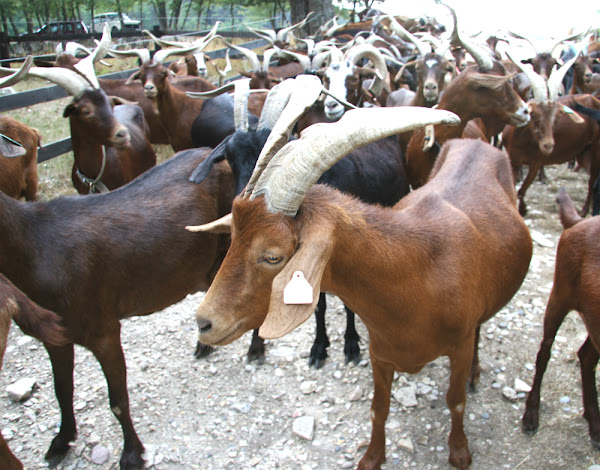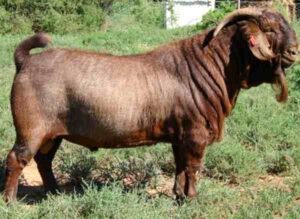The Rove goat is a breed of domestic goat which was first domesticated in France. Rove goat is actually from Le Rove, a small village near Marseille in the south of France. And it was named after the village Le Rove.
Although the breed was first domesticated in France, but it didn’t originate in the country. Most probably they could have been brought to France by Phoenicians.
But the French were responsible for creating the distinct look which is present today. They created such a distinct look through a millennia of selective breeding. And the Rove goat is called Chèvre du Rove in French.
The breed was almost disappeared in the 1970s, mainly because they are not good milk producers like some other popular dairy goat breeds, producing only 500 to 600 liters of milk per year. They were previously considered endangered, but their number is increasing gradually.
As of 2003, there are more than 5000 registered Rove goats on many French Farms. And today the Rove goat breed is protected by an organization called “ADCR” (Association de Défense des Caprins du Rove). Read more information about Rove goat breed below.
Rove Goat Characteristics
Rove goat is easily characterized by it’s distinct appearance with long twisted horns. Their horns are lyre-shaped, very long and can reach nearly 4 ft/1.2 meters in length in adult goats. They have a smooth coat with short and thick hair.
The color of their coat is often red or black. But also in ash gray, red mixed with gray, red speckled with white, black with tan markings under the eyes and nose or red and black. The Rove goat is a medium sized breed.

Average body weight of the Rove buck is between 80 and 90 kg, and the does weight about 50 to 60 kg. Photo from Wikipedia.
Uses
The Rove goat was actually bred as a meat goat breed. But due to less popularity of goat meat in the French market, the farmers have begun to raise the Rove goat as a dairy goat breed instead. But the breed is not too good for milk production. On average, a Rove doe produce about 500 to 600 liters of milk per year.
Special Considerations
Rove goats are very strong and hardy. They are well-suited to the region’s arid climate. They are able to seek out landscapes with scarce and poor vegetation. They are even very suitable for raising in inaccessible areas.
And nowadays they are being used for maintaining inaccessible areas that are in need of clearing to counteract the problems of fire. Rove goat was originally bred for meat when goat meat was commonly consumed in France.
But now goat meat has less popularity and the breed is mainly used for milk production. Although the Rove does are not best milk producers. But their milk is creamier and thicker compared to other goat breeds. Review full breed profile of the Rove goat in the following chart.
| Breed Name | Rove |
| Other Name | Called Chèvre du Rove in French |
| Breed Purpose | Previously bred for meat production, but now the breed is raised as a dairy goat breed. |
| Breed Size | Medium to Large |
| Buck | About 80 to 90 kg |
| Doe | About 50 to 60 kg |
| Horns | Very long twisted horns |
| Climate Tolerance | All Climates |
| Coat Color | The color of their coat is often red or black. But also in ash gray, red mixed with gray, red speckled with white, black with tan markings under the eyes and nose or red and black. |
| Good for Stall Fed | Not sure |
| Rarity | Common |
| Country of Origin | France |






